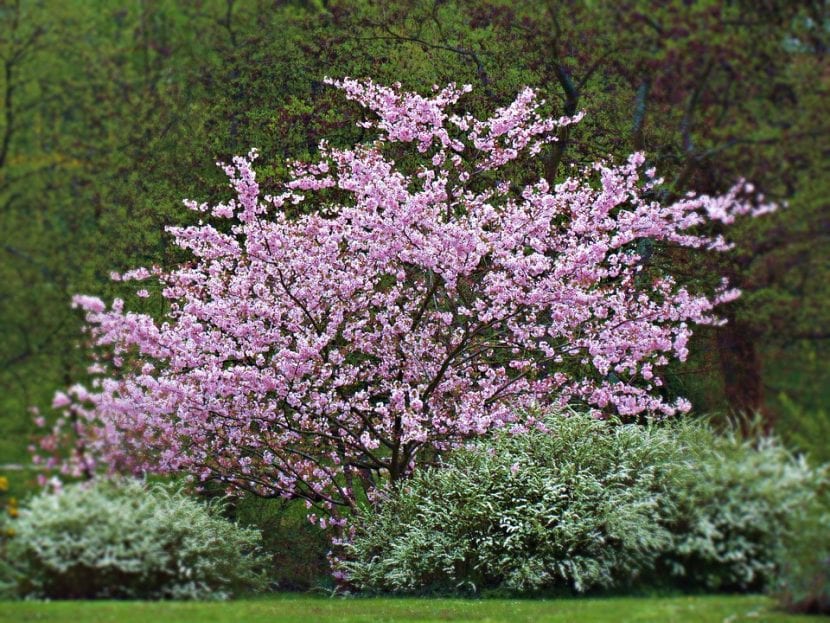
La Syringa vulgaris it is a beautiful tree, ideal to have in all types of gardens, small or large. Its leaves are green, but very pretty, and let's not even talk about its flowers. When it is in flower it is nice to see it for a long time every day.
With minimal care we will be able to contemplate it in all its splendor from minute 1 that it is with us. So if you are looking for a plant that is easy and beautiful, don't stop reading 🙂.
Origin and characteristics
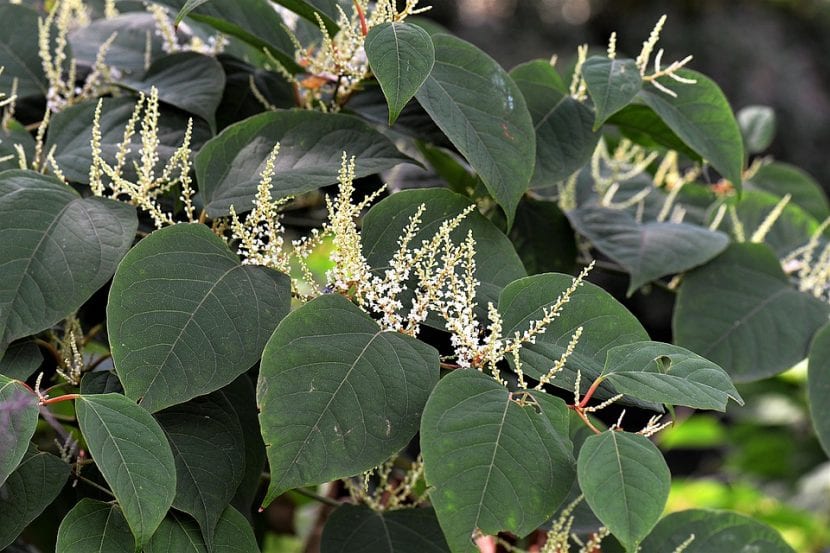
Our protagonist is a deciduous tree endemic to the Balkans, in southeastern Europe, whose scientific name is Syringa vulgaris. It is popularly known as lilo or common lilac, and reaches a height of 6-7 meters, with a single or multiple trunk. The bark is gray to brownish-gray, smooth when young, and cracked when old. The leaves are simple and measure 4-12cm long by 3-8cm wide.
The flowers have a tubular base, with a corolla 6-10mm long with open apices with four 5-8mm lobes, lilac to mauve, sometimes white. They are grouped in inflorescences in the form of a dense and terminal panicle 8-18cm long. The fruit is a dry, brown and smooth capsule 2cm long, inside which we will find two winged seeds.
What are their cares?
If you want to get a copy, we recommend providing the following care:
Location
You have to place your Syringa vulgaris outside, in full sun. It can also be in semi-shade if it receives more light than shade.
Earth
- Garden soil: all except acids. You also have to have good drainage.
- Flower pot: universal culture substrate mixed with 30% perlite.
Irrigation
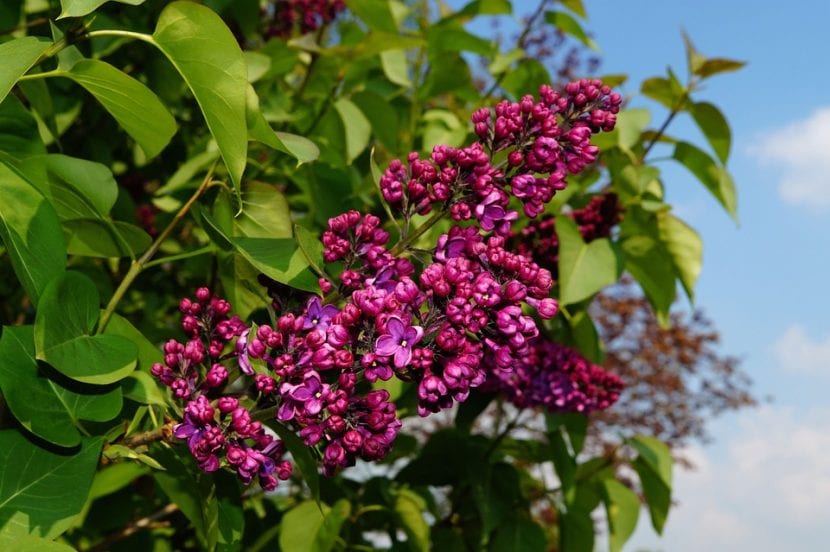
Irrigation has to be moderate, taking into account that it can withstand some drought (no more than 5 days in the middle of summer) if it has been planted in the ground for more than a year. Anyway, the ideal is to water it 2-3 times a week during the warm months and every 4-5 days the rest of the year.
Subscriber
From spring to summer you must pay it with organic fertilizers, such as guano or herbivorous animal manure. In the case of having it in a pot, use liquid fertilizers so as not to hinder the drainage of the water.
Planting or transplanting time
In spring, when the risk of frost has passed. If you have it in a pot you have to transplant it every two years.
Multiplication
Cuttings
To multiply the Syringa vulgaris by cuttings a green shoot measuring 10-15cm has to be cut in early spring. The base is impregnated with homemade and plant roots in a pot with vermiculite that we will keep moist. This way it will take root in 3-6 weeks.
Bent
Air layering can be done in spring, cutting a ring of bark into 1-2 year old branches, impregnate it with rooting hormones, and then cover it with a black plastic bag filled with previously moistened universal growing substrate. Thus, it will root in about 3 months.
Pests
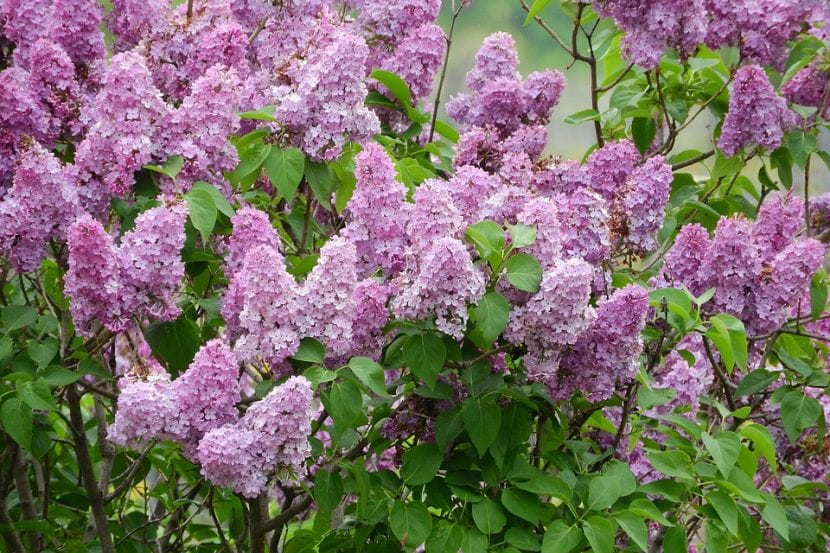
It can be affected by the following:
- Mealybugs: they can be cottony or limpet type. They are fought with anti-mealybugs.
- Drills: excavate galleries in trunks and branches. They are treated with anti-felling insecticides, spraying all parts of the tree.
- Borers: they excavate galleries under the bark, in which small holes appear. The treatment consists of cutting the affected parts and burning them, and in keeping the plant well healthy and cared for.
- Mites: they cause the abortion of the buds. They are fought with acaricides.
Management
It can be affected by the following:
- Powdery mildew: it is a disease caused by fungi characterized by the appearance of a grayish powder on the leaves. It is fought with fungicides.
- Necrosis in the cortex: On diseased branches there are blackish spots, and the leaves blacken and fall. It is fought with fungicides.
- Virus: yellow spots are observed on young leaves. Later they curl or deform. There is no cure. you have to destroy the plant.
Rusticity
Withstands frosts down to -17ºC. In addition, it can live in a wide variety of climates, but it is necessary that the minimum temperature is below 0º so that it can hibernate well.
What uses does it have?
Ornamental
The lilo tree is a plant with a high ornamental value. It can be kept both as an isolated specimen and in groups, even as low or medium hedges. Due to its characteristics, it is also perfect to have in pots, since it does not have an aggressive root system.
Products
All plants have a very important role in their natural habitat, and in the case of the Syringa vulgaris is the serve as food for moth caterpillars Craniophora ligustri. But not only that, but many pollinating insects, such as bees or butterflies, will benefit greatly if we plant a specimen in our garden.
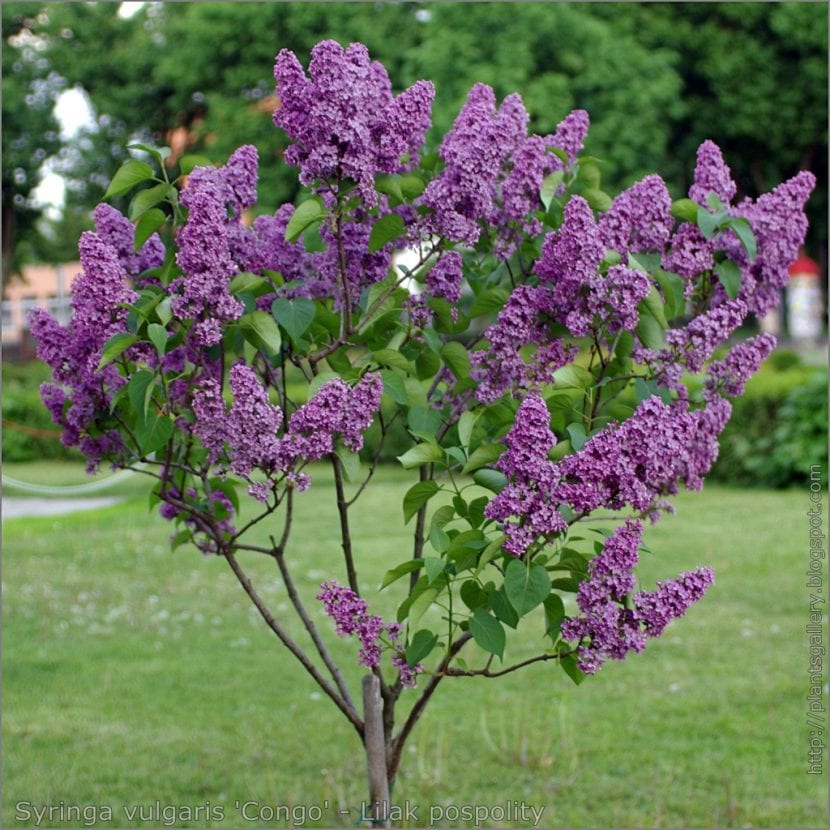
What did you think of this plant? Have you ever seen it? If you are determined to buy one, go to any nursery or garden store (be it online or physical). You will surely find it 🙂.
I have one in my garden, it is very handsome, and they smell very good.
Hi John.
Yes, it is a very beautiful tree 🙂
Regards!
Hello! And the post is very interesting. Between a Wysteria and the Dyringa vulgaris, what would you recommend me? It is to plant in a pot (size?), On a roof and the idea is to put it near a railing to cover it.
Thank you very much
Hello Elena.
For what interests you, I would almost recommend wisteria more, since the Syringa is a tree whose branches are not hanging at all.
Of course, potted wisteria will need regular pruning. You have the token here. As for the size of the pot, it will depend on the dimensions of the plant, but in principle you will need one that measures about 10cm more (width and height) every 2 years. Once it has reached the height you want, the last pot you put in it should measure a minimum of 50cm wide by about the same height.
Regards!